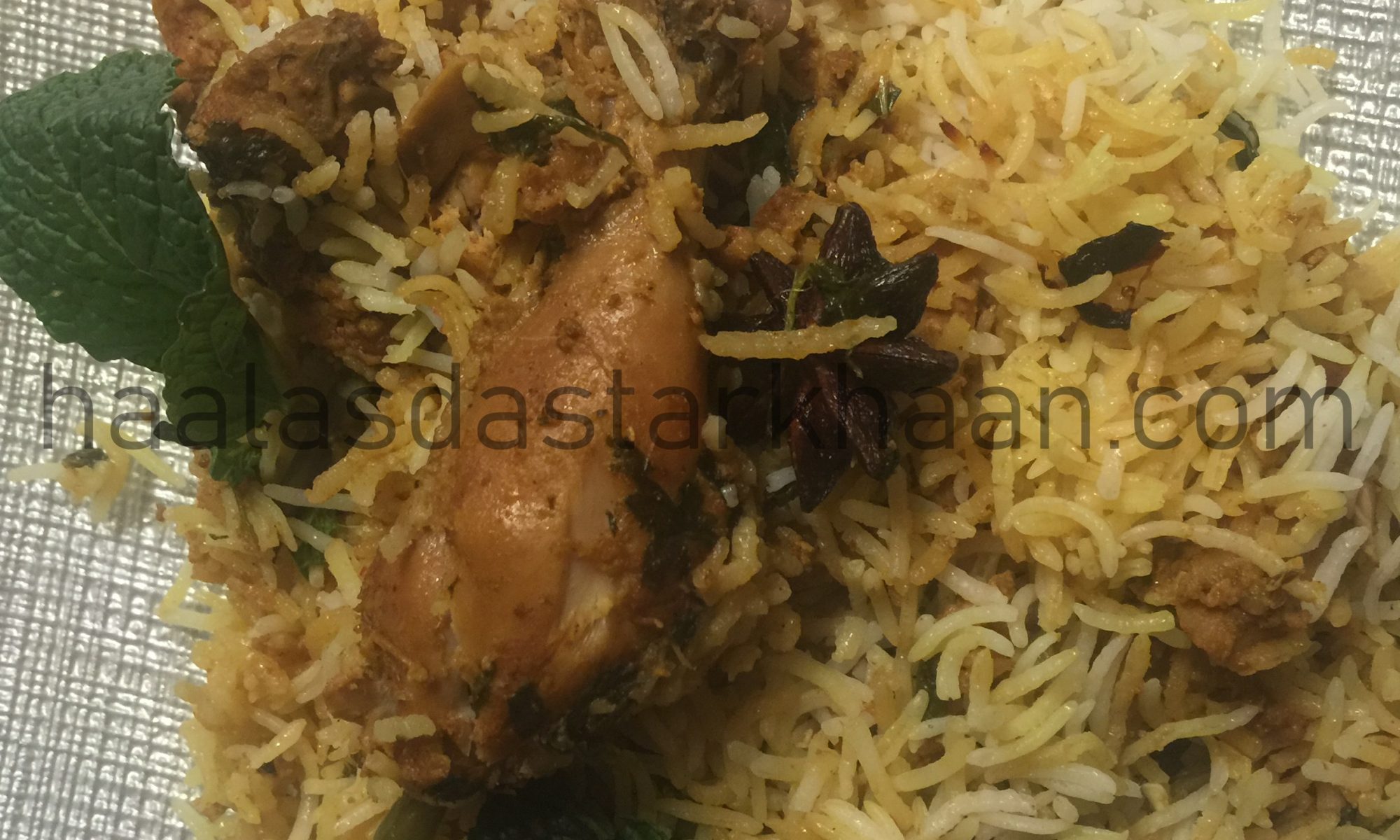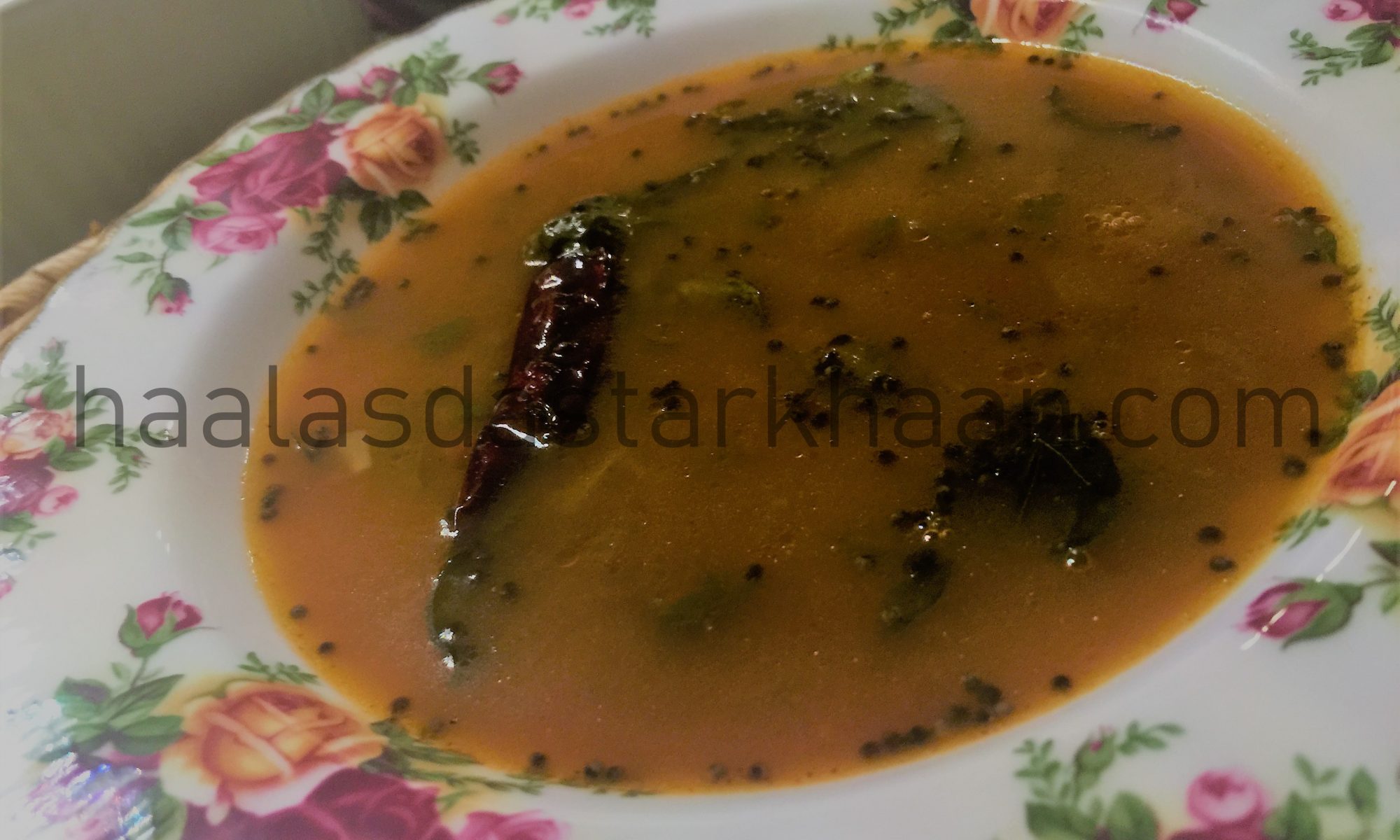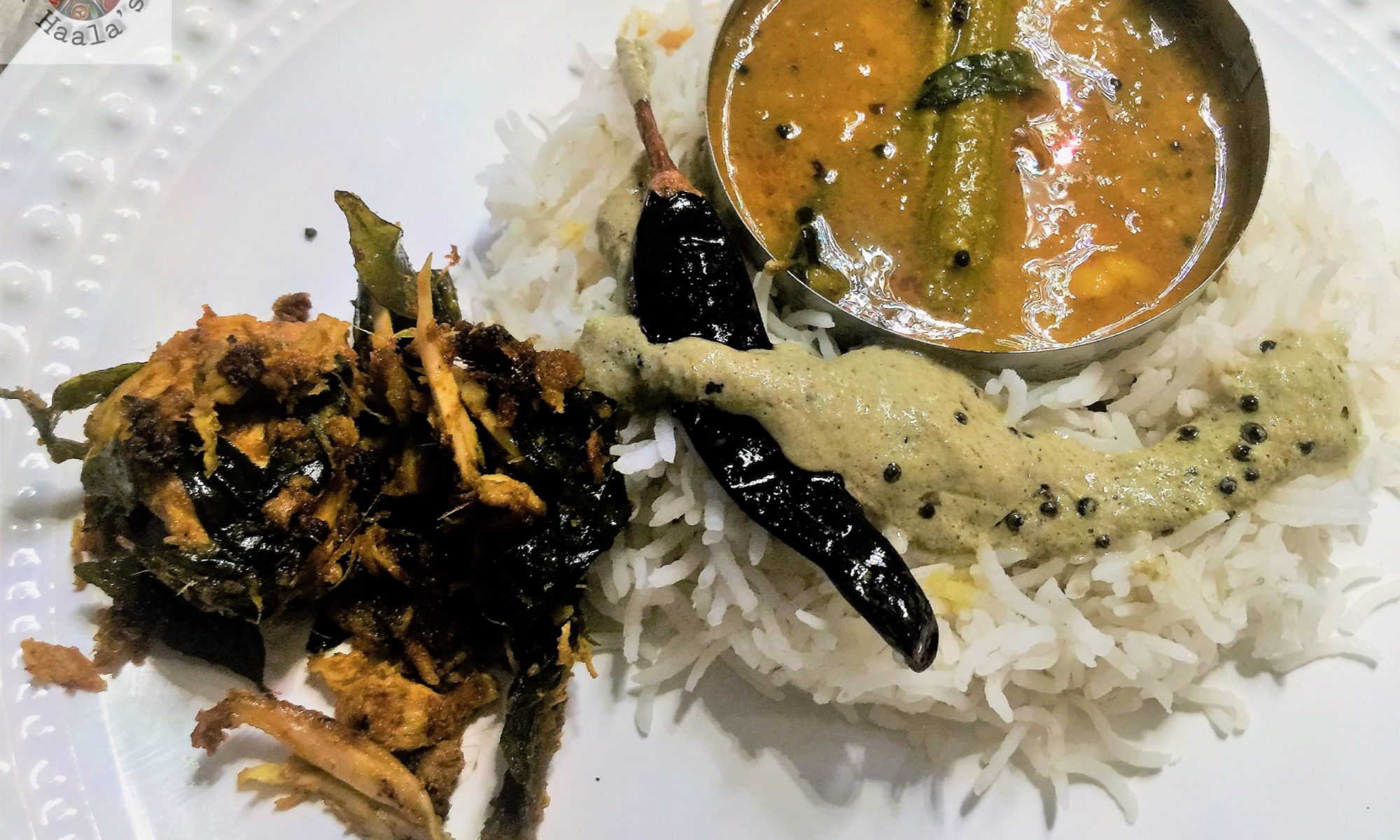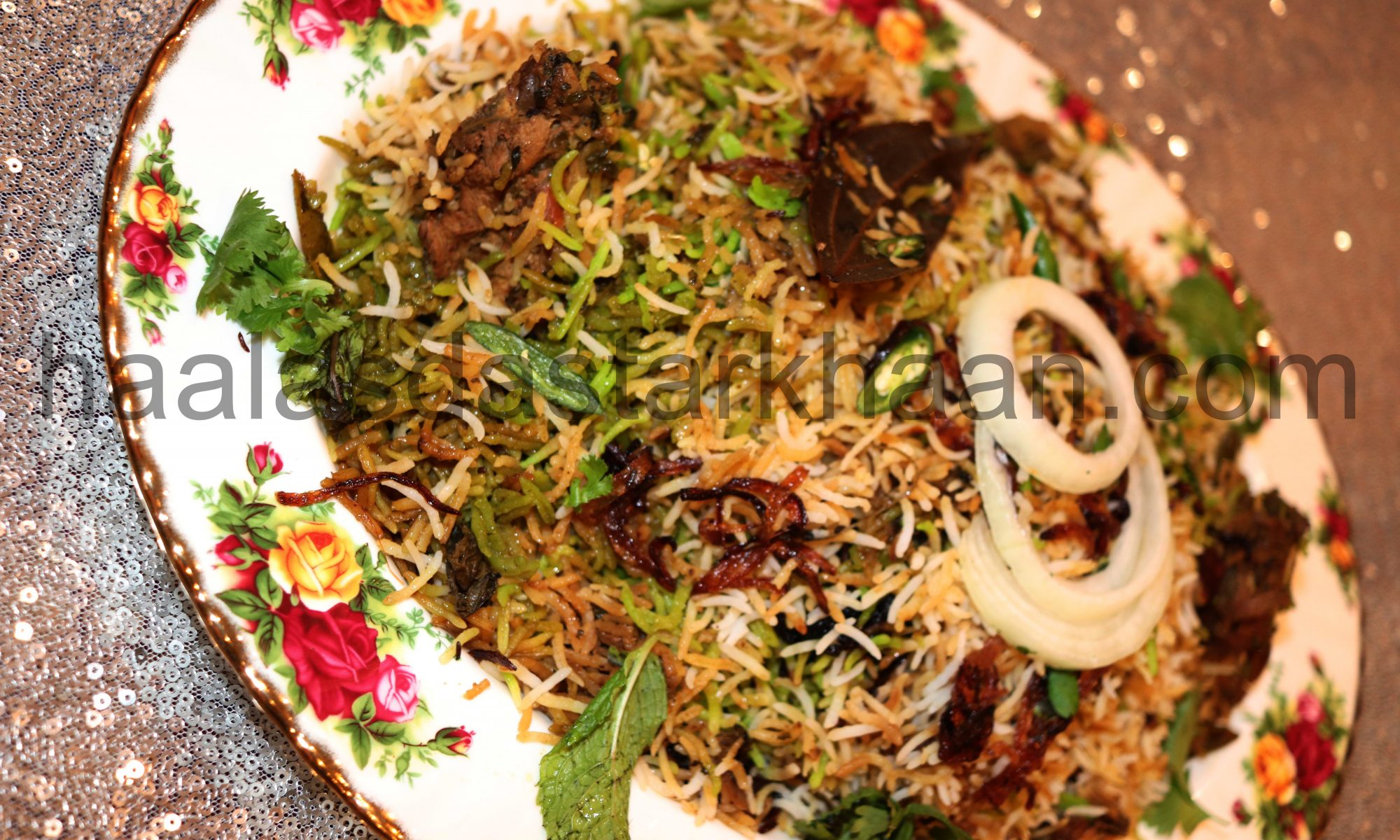
The Non vegetarian recipes of Awadh are influenced from the Nawabs of Awadh, who were rulers of the Persian origin and settled in India. The dishes were always rich in nuts, saffron, spices and ghee. With time, the Persian rulers, just like the Mughals developed liking for chilies and a few other spices in India and developed new flavors and dishes. In modern times, the famous Awadhi Murgh Musallam, kebabs and Biryani are a gift from those ancient times.
Awadhi recipes are not only different from Hyderabadi cuisine but also different from the Lucknowi cuisine. Very few people understand that Awadh and Lucknow could be names of the same region, even then the recipes are very different. Awadhi recipes are more ancient and depict the flavors from Persia more than the Lucknowi cuisine.
One thing that holds a very distinct flavor, is the idea of using whole spices, as opposed to the use of a ready made masala. The masala used in Awadh Biryani has to be grounded just before you start cooking, to keep the flavor and fragrance intact. The original Lucknow Biryani does not require you to grind the spices, they keep it whole.
The Awadh Biryani can also be made in Vegetarian style and hopefully, I will try it soon and post it as well.

The first time I tried Rasam was in Dallas, Texas. Funny, right??? We were newly married and after 2 weeks of coming to USA, Mr. Parveez was offered a 2 week project in Dallas and he took me along. There happened to be an Indian restaurant very close to the hotel where we stayed and we would visit that place for lunch almost every other day. The non vegetarian food in that restaurant was not halal, leaving us with the only option of consuming vegetarian food.
After a day or two of being there, I came down with bad cold. I was in a pretty bad state and all I needed was a some nice warm soup. We were back for lunch to the same restaurant and decided to order some Tomato soup and while going through different soup options, Mr. Parveez came acrossTomato Rasam on the menu and he ordered it for us. I still remember looking at the soup bowls that looked like they contained colored water with tadka. My expectations were really low and honestly, somewhere in my mind I wasn’t too happy with Mr. Parveez performing experiments with my taste buds while I suffered from bad cold.
Anyways, the first spoon of the Rasam in my mouth and I had a party of flavors in my mouth. The spice was so mild, yet so prominent to make its mark and leave that tingling sensation on your tongue. The taste was so delicious that while you have a spoonful in your mouth, your soul craves for another one. And, the best part was the reaction of my sinus. My nose block just opened up and I started feeling so much better since now, I could smell the lovely flavors as well. From that day, till the day we stayed in Dallas and were in that restaurant for lunch, we would order the Tomato Rasam everytime.
And, after I returned home, I started my research on Rasam and discovered that Rasam is made in different flavors, Tomato Rasam is just one among the many and from there started my journey on making different rasam at home. We enjoy it more during winter and fall. My kids love it with boiled rice and every sinus congestion, cold and flu season…Rasam is always a part of our meal.

Drumstick Sambhar is one of the basic and easiest sambhar recipes you can come across. I have always recieved most compliments on this sambhar from family and friends. I think one of the best foods are foods that require less time and hassle to cook and can be served immediately. Since you consume them few mins after cooking, the flavors are beautiful, rich and divine.
If you study Indian culture closely, you will notice a word in food terms, referred as “Saatvik”. Saatvik is clean eating habits and is generally referred to the food consumed by Sadhus or Spiritual healers and teachers. It was believed that simple food helped them think higher and deeper thoughts and eventually they became leaders of religion or society by keeping their lifestyle basic and food extremely simple. During the time of ancient India, even widows were asked to consume spice less food, since it was believed that consumption of spice led to desires that were regarded a sin for women.
As much as I have studied, Saatvik food requires almost no spice and it lets the flavors of the vegetables and daals enhance the dish, rather than produce mixed with spices. With time and years passing by, the meaning of saatvik changed as well. Now saatvik stands for simple and clean food and is consumed by everyone on daily basis to take a break from the over processed food around us.
This sambhar recipe is very clean and easy to make. Serve with boiled rice and enjoy the heavenly flavors.



